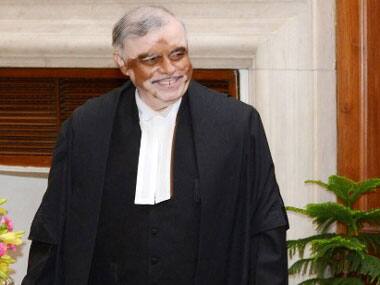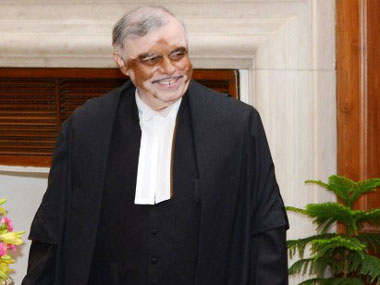If a review petition is a long shot, a curative petition is an even longer shot in the Indian judicial system. But as election fever takes over the country’s attention, there’s one last-ditch attempt being made to shake the Supreme Court into action on Section 377. The Naz Foundation (India) Trust, the original petitioner challenging Section 377 has filed a curative petition challenging the 11/12/13 verdict of the Supreme Court where it overturned the Delhi High Court’s judgement. [caption id=“attachment_1464135” align=“alignleft” width=“380”]
 A file photo of
Chief Justice of India P Sathasivam. AFP[/caption] The petition tries to argue that this is a case that truly deserves the curative jurisdiction of the court which is usually reserved for extraordinary situations. Normally activists are not too hopeful about the court entertaining curative petitions but Naz has brought together many senior counsels who have never argued for curative petitions to make their case in the hope that it will make the justices pay serious attention to it. But it’s still a long shot except an odd little nugget has surfaced that offers a peek into the Chief Justice’s mind. Chief Justice P Sathasivam has to hear the petition and he has said nothing personally about the 11/12/13 ruling delivered by his two colleagues. Nor has he said anything after two judges rejected without comment the review petition filed by the government. However now a
transcript has surfaced of Sathasivam making comments about the Delhi High court ruling back in 2009 at the Tamil Nadu State Judicial Academy. Speaking about transgender rights, Sathasivam had categorically and unambiguously slammed Section 377. The laws that, in today’s date, terrorise the transgender community are Section 377 of the Indian Penal Code, 1870 and the Immoral Traffic Prevention Act, 1986. And completely contrary to his colleagues who dismissed homosexuals as a “miniscule fraction” and the abuse of Section 377 as negligible, Sathasivam said “From the numerous instances of abuse and violence against homosexuals and transgenders, it is evident that Section 377 has been grossly misused. It is equally obvious that a judicial move to address this concern was exigent in the face of a law enforcement framework so hostile that exploitation at the hands of the alleged protectors became a quotidian affair for sexual minorities in India.” And in case his audience didn’t get the point, he went on to underline it further. Section 377 has been extensively used by the law enforcers to harass and exploit homosexuals and transgender persons. Not just content with that, Sathasivam even read out cases where that had happened lamenting the police arrested a transgender named Narayana for theft “without informing him of the grounds of arrest or extending any opportunity to him to defend himself.” Even worse Narayana’s diary was seized to identify other transgenders in the network. Then Sathasivam went on to extol the same Delhi High Court judgement that has been turned upside down. With the advent of the contemporary epoch, the movement against the repressive and oppressive nature of Section 377 grew exponentially and it was finally on 2 July, 2009 that for the first time any court in India pronounced that the oppression meted out to the transgender community and the homosexuals in the country is violative of Right to Equality under Article 14, Right against Discrimination under Article 15, and Right to Privacy and Personal Dignity under Article 21of the Indian Constitution. These rights are not only constitutionally guaranteed but are also implicit in the Universal Declaration of Human Rights and should therefore; enjoy a superior position to other rights. The judgment of the Delhi High Court reflects a sense of conscience and empathy towards the sexual minorities, emotions that were hitherto unknown. Section 377, in its criminalization of homosexual activity, was a repressive measure on the fundamental rights of the transgender community. At that time Justice Sathasivam’s speech had not made any waves because even the government had come around to deciding not to oppose the Delhi High Court verdict which had been welcomed by most of civil society and even political parties had chosen to keep mum. But now he will have the awkward task of choosing between what is clearly his own stance on the issue and the completely contradictory one laid down by his two colleagues. Curative petitions remain a long shot but this unusual glimpse into the Chief Justice’s mind introduces a glimmer of hope.The Chief Justice had an opinion about 377. Does he still hold it?
A curative petition for Section 377 is a long shot except an odd little nugget has surfaced that offers a peek into the Chief Justice’s mind as the petition goes before him.
Advertisement
End of Article


)
)
)
)
)
)
)
)
)



